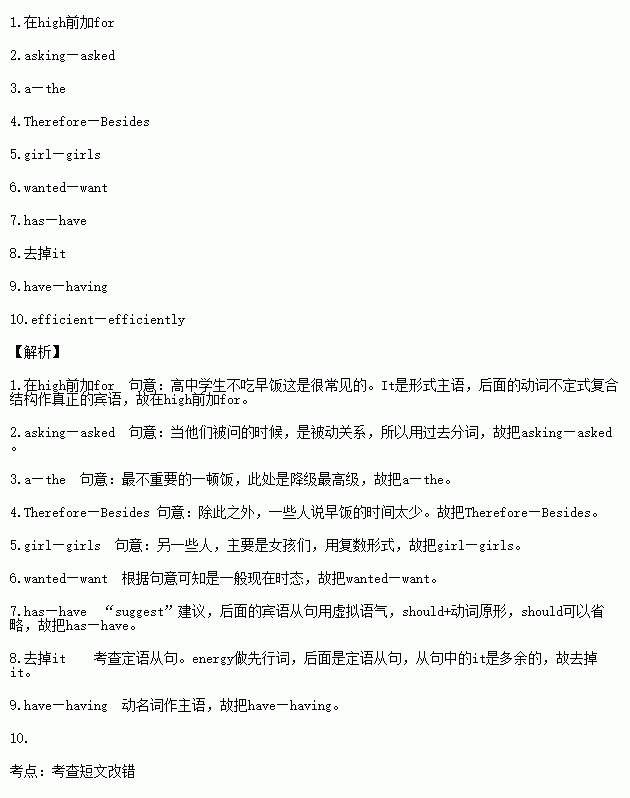题目内容
假定英语课上老师要求同桌之间交换修改作文,请你修改你同桌写的以下作文。文中共有10处语言错误,每句中最多有两处。每处错误仅涉及一个单词的增加、删除或修改。
增加:在缺词处加一个漏词符号(∧),并在其下面写出该加的词。
删除:把多余的词用斜线(\)划掉。
修改:在错的词下划一个横线,并在该词下面写出修改后的词。
注意:1. 每处错误及其修改均仅限一词;
2. 只允许修改10处,多者(从十一处起)不计分。
Nowadays it’s common high school students to skip breakfast, leading to both poor school performance and damage to their health. When asking why they skip breakfast, some students say they think of breakfast as a least important meal of the day, and think it unnecessary. Therefore, some say they have too little time in the morning to have breakfast. And others, mostly girl, say they wanted to lose weight so they skip breakfast.
We suggest that every student has breakfast properly every day, since breakfast can provide the necessary energy that one needs it every day. In addition, have breakfast can help you to concentrate in class and study more efficient.

